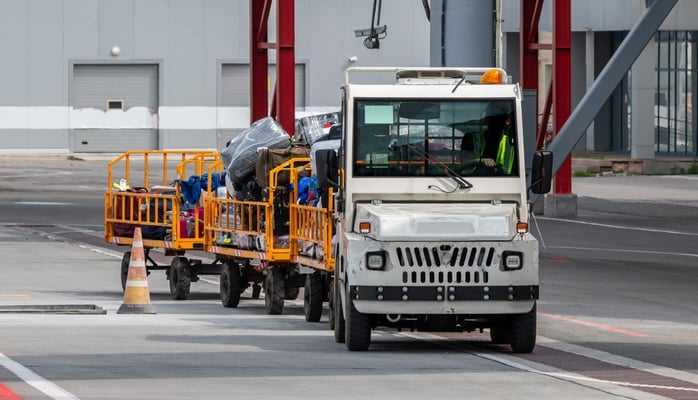A Reporting Culture Is a Just Culture

Workers’ participation in aviation safety management systems (SMS) comes down to one word: reporting.
When workers are reporting, it demonstrates three things:
- That they trust the SMS that is in place
- Cultivation of Just Culture in the workplace
- That the aviation safety officer is doing his job well
But as we are well aware, creating a hazard reporting culture has several powerful enemies, namely
- Frustrating reporting methods;
- Retaliatory/punitive work environments; and
- Apathy among others.
It is the primary responsibility of a safety manager to make sure that the workers – workers who are in the safety “trenches” every day – feel involved in the aviation SMS.
Related Aviation Safety Manager Articles
- What Makes a Good Aviation Safety Manager?
- How to Manage Aviation SMS Budget Expectations - for Safety Managers
- How Safety Managers Increase Their Power in Aviation SMS
One blog article isn’t enough to get into the nitty-gritty complexities of stimulating safety reporting cultures. Yet, there are several great ways to stimulate workplaces struggling with healthy safety reporting metrics.
Or, if your SMS is already fairly productive, you may find a few gems to fall back on.
What Is a Healthy Safety Reporting Culture?
Whether you think your safety reporting numbers are too low or you think they are outstanding, let's ask ourselves: What are healthy safety reporting numbers?
First, answer this question for yourself. Fill in the blank:
The safety reporting numbers in our aviation SMS are (fill in the blank):
- nonexistent;
- poor;
- average;
- better than most; or
- excellent?
Next, this next answer every safety manager knows without having to look in the database. Fill in the blank again:
For each month, we can expect reports for every 100 employees (fill in the blank with an answer below)
- <= 1 = nonexistent;
- 2 = poor;
- 4 = average;
- 7 = better than most; or
- 10 = excellent
Do you have a healthy reporting culture?
A top-performing safety culture should see one safety report for every ten employees each month. If you have seven reports, there is still room for improvement. I picked seven because a Canadian operator told me last week that they get about seven reports per month per 100 employees. I was surprised, as this is better than most operators I talk to, and I work with many.
Let's get one thing clear right away: "Average" safety reporting numbers are not GOOD safety reporting numbers. There is considerable room for improvement.
This article has been written for safety professionals stuck in safety reporting cultures with average to nonexistent safety reporting metrics. For those safety managers who are feeling smug because their reporting metrics are not "disappointing," you will find something useful here. One very important point to keep in the back of your mind is: safety culture takes time to build, but it's very easy to damage.
Related Aviation Safety Culture Articles
- How Aviation Safety Managers Can Improve Safety Reporting Cultures
- 5 Simple Tips to Improve Aviation Safety Reporting Cultures
- How to Develop Healthy Safety Reporting Cultures in Aviation SMS
Engage Workers to Build Aviation Safety Reporting Culture

This is definitely one of those “well-duh” topics, but also one that, being so obvious, is often overlooked. Statistics is a great tool for analyzing the effectiveness of a safety performance measurement. However, statistics are unable to answer questions that only someone intimately working with the data can, such as
- Is this process (or risk control) while safe, also frustrating to the point of feeling ridiculous?
- Is there a more efficient way of implementing it?
- Are workers actually following this process as they should?
- Does this process satisfy the actual intent of management?
These questions should be asked and followed up with regularity, especially as new processes or risk controls are implemented because let’s face it, workers are vulnerable.
Contact between aircraft and ground-service equipment accounts for more than 80% of ramp accidents. Gate stop injuries have 17% more injuries during arrival than departures.
Why these disparities? These are questions that cannot be answered with management sitting in an office.
This brings me to my next point.
Meet Employees at Their Comfort Zone
That comfort zone could be anywhere:
- In your or their office
- On the ramp or in their work-space
- After work over coffee or a drink
Meet in whatever way most effectively helps them open up and be honest and transparent about their feelings.
Any barrier to a worker’s willingness to talk about his/her hands-on assessment of the success/failure of a process or safety risk control is also a barrier to the functioning of the aviation SMS.
Creating a sense of comfort and building trust is essential to building a Just Culture.
Related Aviation Safety Culture Articles
- What Is Safety Culture in the Aviation Industry?
- Why Transparency Promotes Safety Culture in Aviation SMS
- How Top Management Kills Aviation Safety Culture - With Examples
Engaging by Active Listening
Another "well-duh." And yet I have seen it happen, spoken with safety managers who have seen it happen or have admitted to being guilty of it, and have had it personally happen to myself:
A safety officer gets busy telling a worker about the effectiveness of the process/risk control that the worker is dealing with every day.
This is a great way to shut down communication lines with anybody. When I think about engaging by listening, I am loosely plagiarizing what psychologists refer to as "active listening." Active listening is simply listening, and then repeating back to the speaker a summary of the main point they were making.
For example, an active listener might say, "It sounds like you are saying that..."
This strategy has historically proven greatly effective to make anybody - especially the worker you are talking to:
- Feel heard
- Feel engaged
- Trust and feel trusted
In other words, it is the Airbus A380 of opens direct communication lines between you and individuals who are dealing with a majority of the hazards every day.
Make Reporting Quick and Easy

I saved the best for last. It's kind of another "well-duh," but it is extremely important nonetheless.
When we are talking about quick and easy hazard/safety reporting in aviation SMS, we are talking about three things:
- No pen and paper reporting
- Instant access to reporting
- Highly simplified, streamlined process
Who would rather fill out a form on paper by hand, than use a computer-web-based form with plenty of opportunities for autofill or copy and paste? That is a question and answer.
Most people would MUCH rather report on an iPhone or iPad app than on paper because it's significantly faster and easier.
As a follow-up, having Web-based tools such as being able to report safety concerns from a computer or, better yet, a cell phone provides a significant avenue for aviation safety reporting. It's immediately accessible.
Finally, "highly simplified" simply entails having quick safety reporting options, pre-filled reporting forms, and forms that require only the most relevant information.
All three examples are geared towards making safety reporting fast and simple.
Related Articles on Aviation SMS Safety Reporting
- How to Make Safety Reporting Forms for Aviation SMS - With Resources
- How Confidential Aviation Safety Reporting Systems Offer Assurance to Employees
- What Is Missing Most in Aviation Safety Reporting Systems?
Summary
The basic premise of creating healthy safety reporting cultures is to open lines of communication between yourself and the workers. Opening lines of communication:
- Builds trust
- Removes inhibitions
- Provides quick access
- Creates an "open door" type environment
Ultimately, we are talking about engagement. An aviation SMS is not about passive policy and procedures - it might arise from policy and procedures, but it's not about that.
Rather, it's about the everyday actions and experiences of workers on the ground level. Building trust and engaging workers will do wonders for improving a workplace reporting culture.
Healthy Safety Reporting Cultures Need Good Tools
Safety reporting should be a continual focus of the SMS. Safety reports, along with audit results, provide essential data for spotting trends. Safety teams should be encouraging the reporting of EVERY minor incident and close call, no matter how insignificant. The Heinrich principles state that there are 600 minor incidents for every major accident. What this tells us is that there will be many chances to delay "The Accident," as long as the safety culture is conducive to reporting every minor incident.
Strong reporting cultures generate lots of safety reports. Effective safety managers who have SMS database tools can efficiently AND easily deal with 20 to 50 safety reports in a day. The fastest turnaround I've seen is a safety manager processing a dozen fresh safety reports within an hour. For each reported issue, this includes:
- initial review;
- drafting a preliminary risk statement;
- initial risk assessment;
- set a tentative deadline;
- optionally classify (could be done later); and
- assign the reported issue to the responsible manager with risk acceptance authority.
Imagine one safety manager processing a dozen safety reports within an hour, the day before the big audit. I've seen it done. We have the tools. We want to help, and we want to be your SMS Partner.
If you are needing user-friendly SMS database tools, please watch these videos to determine whether we are a good fit for you.
Live SMS Pro Demo
Last updated February 2025.








